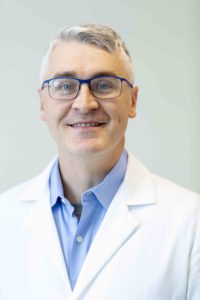
University of Washington researchers have developed a fast, inexpensive method to make electrodes for supercapacitors, with applications in electric cars, wireless telecommunications and high-powered lasers.
Professor Cole DeForest is researching new ways to coerce stem cells into transforming into other cell types. Ultimately, his research could make huge impacts in medicine by engineering organs and tissues to combat heart disease. DeForest is an assistant professor of chemical engineering and a member of the Molecular Engineering & Sciences institute faculty.
Read more at The Whole U website. Read More
A team of University of Washington researchers has engineered yeast cells that can "talk" to one another, using a versatile plant hormone called auxin.
University of Washington scientists have built a new nanometer-sized laser "” using the thinnest semiconductor available today "” that is energy efficient, easy to build and compatible with existing electronics. The ultra-thin semiconductor is about 100,000 times thinner than a human hair.
Faculty and student researchers at the UW Molecular Engineering & Sciences Institute are emerging as leaders in the fast-growing field of 2D materials. Physics professors David Cobden and Xiadong Xu study the characteristics of single sheets of atomically thin material.
These single-layer materials, also known as monolayers, are flexible, and act as semiconductors with extraordinary electronic properties. Semiconductors are an essential component in all modern solar cells and electronics. Their research could be the basis for next-generation flexible and transparent computing, better light-emitting diodes, or LEDs, and solar technologies. Read More
Results of collaborative research from the Institute for Protein Design, Stayton Lab and Fred Hutchinson Cancer Research Center published in CELL magazine.
It's been said that absence makes the heart grow fonder, but recent research at the University of Washington Molecular Engineering and Sciences Institute may prove that close proximity is the recipe for success.
A recent cancer-fighting discovery was made possible by the group effort that combined the protein design and engineering skills of researchers working with Dr. David Baker, UW professor of biochemistry and head of the Institute for Protein Design (IPD) and the drug therapy and delivery research spearheaded by researchers working with Dr. Read More
Michelle Ma
Vaccines combat diseases and protect populations from outbreaks, but the life-saving technology leaves room for improvement. Vaccines usually are made en masse in centralized locations far removed from where they will be used. They are expensive to ship and keep refrigerated and they tend to have short shelf lives.
University of Washington engineers hope a new type of vaccine they have shown to work in mice will one day make it cheaper and easy to manufacture on-demand vaccines for humans. Read More
From UW Today: UW engineers invent programming language to build synthetic DNA
Similar to using Python or Java to write code for a computer, chemists soon could be able to use a structured set of instructions to "program" how DNA molecules interact in a test tube or cell.
A team led by the University of Washington has developed a programming language for chemistry that it hopes will streamline efforts to design a network that can guide the behavior of chemical-reaction mixtures in the same way that embedded electronic controllers guide cars, robots and other devices. Read More
Regulating electron "˜spin' may be key to making organic solar cells competitive
Organic solar cells that convert light to electricity using carbon-based molecules have shown promise as a versatile energy source but have not been able to match the efficiency of their silicon-based counterparts.
Now, researchers have discovered a synthetic, high-performance polymer that behaves differently from other tested materials and could make inexpensive, highly efficient organic solar panels a reality.

.
The polymer, created at the University of Washington and tested at the University of Cambridge in England, appears to improve efficiency by wringing electrical current from pathways that, in other materials, cause a loss of electrical charge. Read More
University of Washington engineers have created a synthetic substance that fully resists the body's natural attack response to foreign objects. Medical devices such as artificial heart valves, prostheses and breast implants could be coated with this polymer to prevent the body from rejecting an implanted object.